Abstract
Sodium polyanethol sulfonate (SPS) at 500 microgram/ml, but not sodium amylosulfate (SAS) at 500 microgram/ml, precipitated egg white lysozyme (1 mg and 50 microgram of lysozyme per ml) as determined with the assay strain Micrococcus lysodeikticus ATCC 4698. Fresh and heat-inactivated (56 degrees C, 30 min) human serum (80%, vol/vol) killed M. lysodeikticus (10(4) bacteria per ml at zero time) within 1 to 2 h after exposure. Addition of 250 to 500 microgram of SPS per ml to fresh human serum protected M. lysodeikticus for 22 h as effectively as absorption of either fresh or heat-inactivated human serum with bentonite (10 mg/ml of serum, 10 min, 37 degrees C); the latter procedure is known to remove serum lysozyme. In contrast, SAS at 250 and 500 microgram/ml of serum retarded killing of the assay bacteria for periods of 4 h; after overnight (22 h) incubation, however, the number of M. lysodeikticus survivors had decreased significantly. The finding that SPS, but not SAS, at 250 to 500 microgram/ml effectively neutralized serum lysozyme-mediated killing of a lysozyme-sensitive assay strain may be of relevance with respect to laboratory processing of human blood culture specimens.
Full text
PDF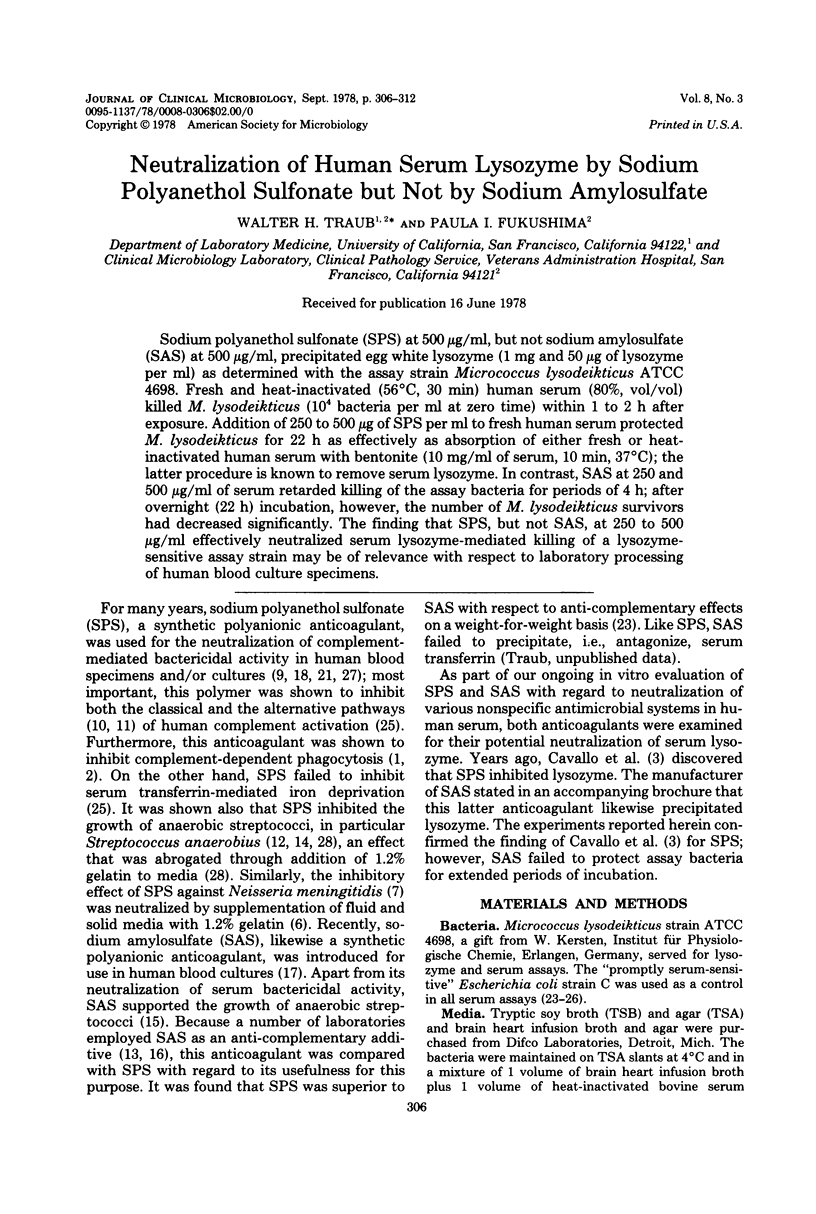
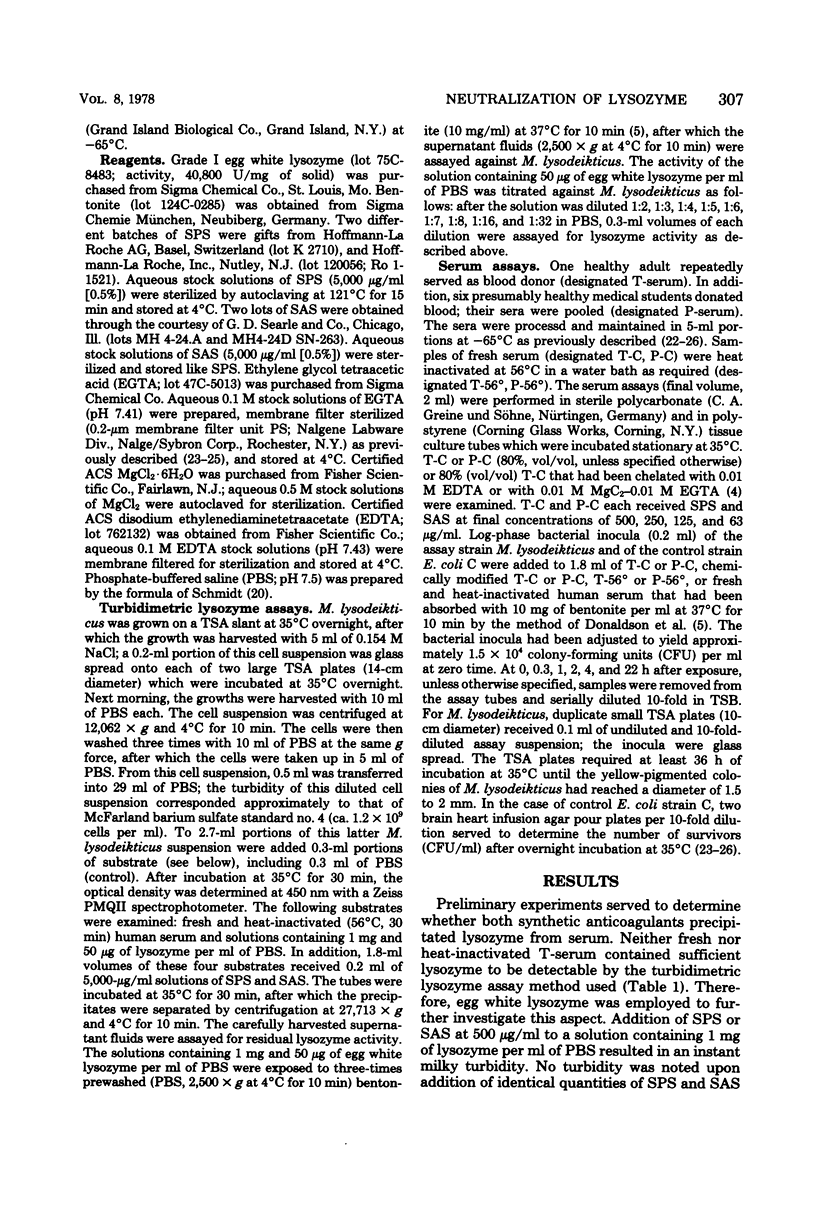
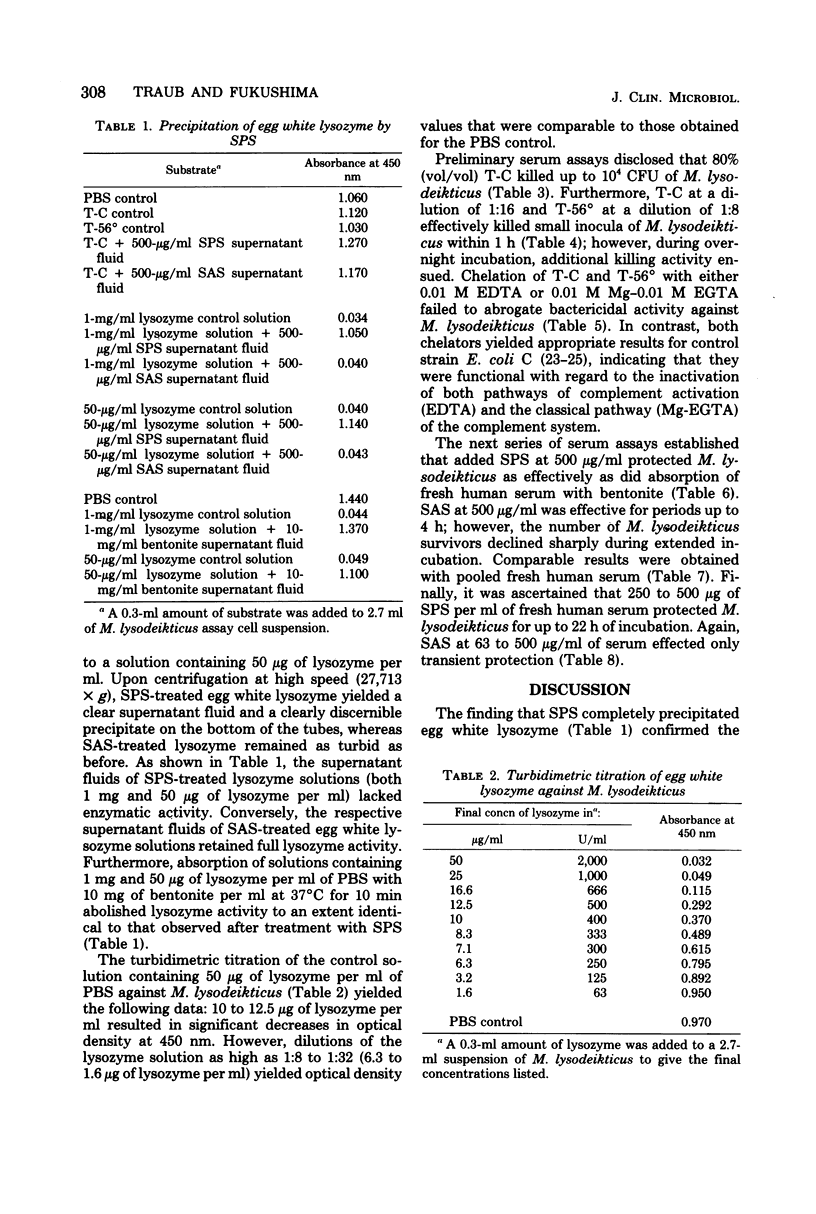
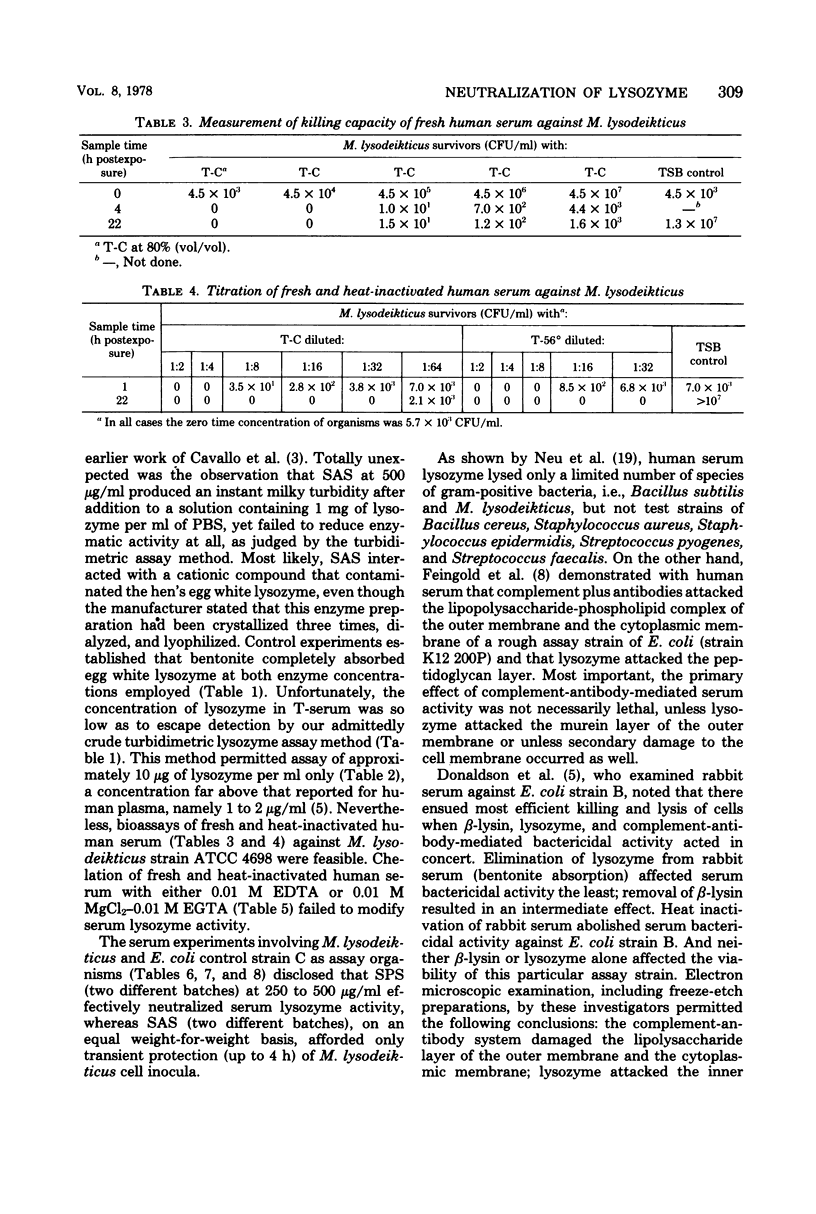
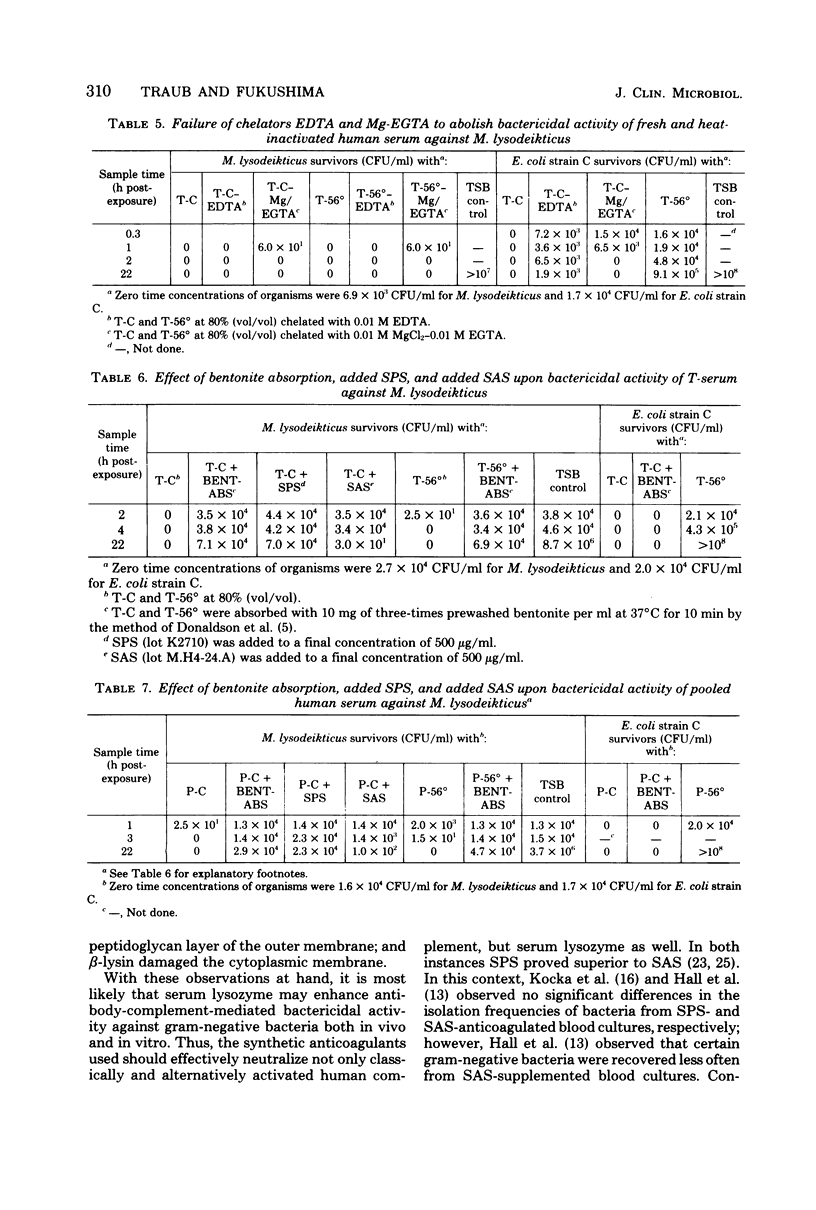
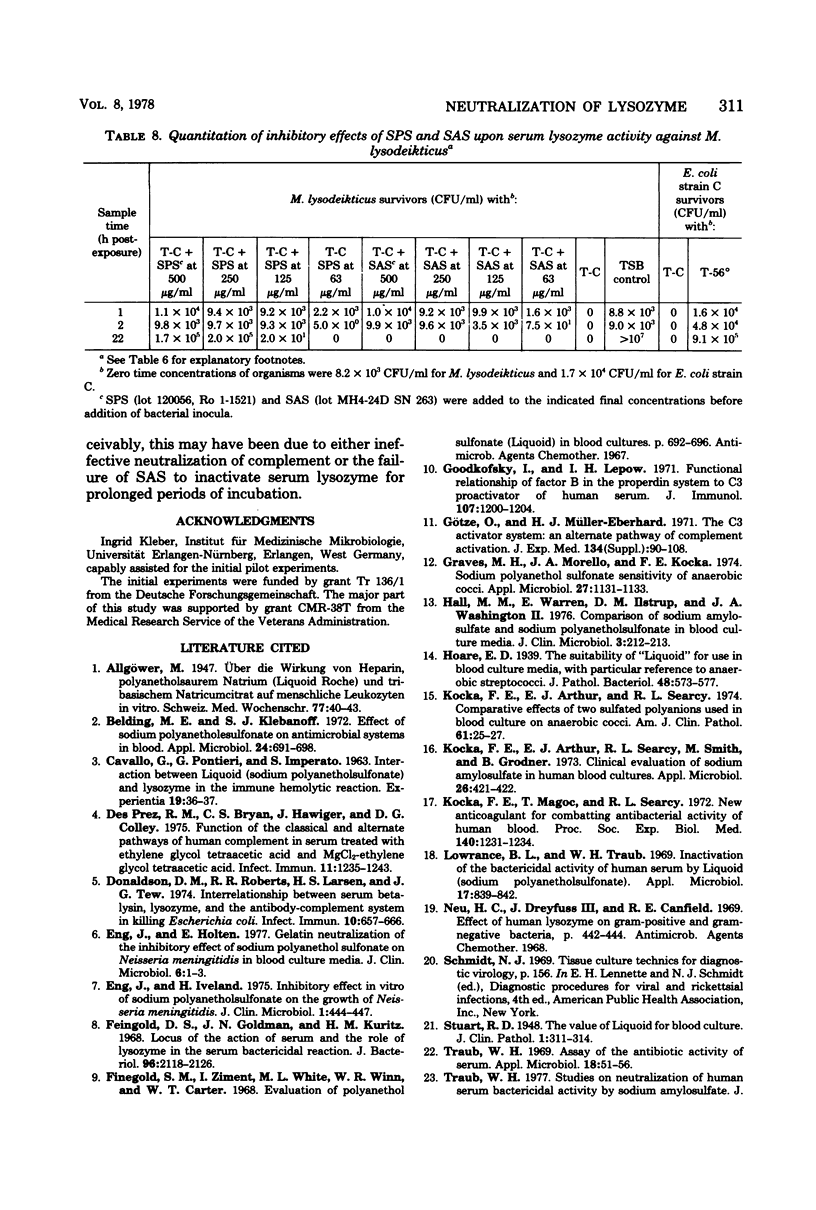
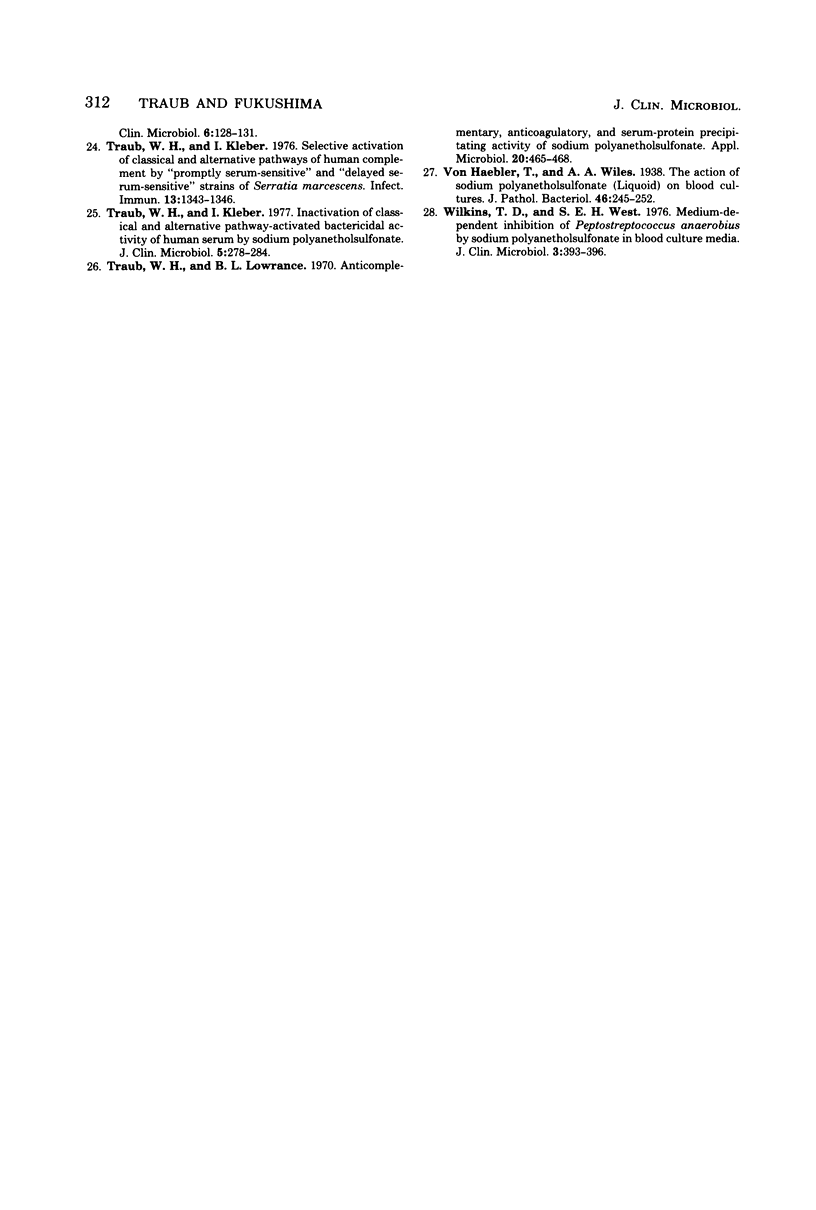
Selected References
These references are in PubMed. This may not be the complete list of references from this article.
- Belding M. E., Klebanoff S. J. Effect of sodium polyanetholesulfonate on antimicrobial systems in blood. Appl Microbiol. 1972 Nov;24(5):691–698. doi: 10.1128/am.24.5.691-698.1972. [DOI] [PMC free article] [PubMed] [Google Scholar]
- CAVALLO G., PONTIERI G., IMPERATO S. Interaction between "liquoid" (sodiumpolyanetholsulphonate) and lysozyme in the immune haemolytic reaction. Experientia. 1963 Jan 15;19:36–37. doi: 10.1007/BF02135347. [DOI] [PubMed] [Google Scholar]
- Des Prez R. M., Bryan C. S., Hawiger J., Colley D. G. Function of the classical and alternate pathways of human complement in serum treated with ethylene glycol tetraacetic acid and MgCl2-ethylene glycol tetraacetic acid. Infect Immun. 1975 Jun;11(6):1235–1243. doi: 10.1128/iai.11.6.1235-1243.1975. [DOI] [PMC free article] [PubMed] [Google Scholar]
- Donaldson D. M., Roberts R. R., Larsen H. S., Tew J. G. Interrelationship between serum beta-lysin, lysozyme, and the antibody-complement system in killing Escherichia coli. Infect Immun. 1974 Sep;10(3):657–666. doi: 10.1128/iai.10.3.657-666.1974. [DOI] [PMC free article] [PubMed] [Google Scholar]
- Eng J., Holten E. Gelatin neutralization of the inhibitory effect of sodium polyanethol sulfonate on Neisseria meningitidis in blood culture media. J Clin Microbiol. 1977 Jul;6(1):1–3. doi: 10.1128/jcm.6.1.1-3.1977. [DOI] [PMC free article] [PubMed] [Google Scholar]
- Eng J., Iveland H. Inhibitory effect in vitro of sodium polyanethol sulfonate on the growth of Neisseria meningitidis. J Clin Microbiol. 1975 May;1(5):444–447. doi: 10.1128/jcm.1.5.444-447.1975. [DOI] [PMC free article] [PubMed] [Google Scholar]
- Feingold D. S., Goldman J. N., Kuritz H. M. Locus of the action of serum and the role of lysozyme in the serum bactericidal reaction. J Bacteriol. 1968 Dec;96(6):2118–2126. doi: 10.1128/jb.96.6.2118-2126.1968. [DOI] [PMC free article] [PubMed] [Google Scholar]
- Goodkofsky I., Lepow I. H. Functional relationship of factor B in the properdin system to C3 proactivator of human serum. J Immunol. 1971 Oct;107(4):1200–1204. [PubMed] [Google Scholar]
- Graves M. H., Morello J. A., Kocka F. E. Sodium polyanethol sulfonate sensitivity of anaerobic cocci. Appl Microbiol. 1974 Jun;27(6):1131–1133. doi: 10.1128/am.27.6.1131-1133.1974. [DOI] [PMC free article] [PubMed] [Google Scholar]
- Hall M. M., Warren E., Ilstrup D. M., Washington J. A., 2nd Comparison of sodium amylosulfate and sodium polyanetholsulfonate in blood culture media. J Clin Microbiol. 1976 Feb;3(2):212–213. doi: 10.1128/jcm.3.2.212-213.1976. [DOI] [PMC free article] [PubMed] [Google Scholar]
- Kocka F. E., Arthur E. J., Searcy R. L. Comparative effects of two sulfated polyanions used in blood culture on anaerobic cocci. Am J Clin Pathol. 1974 Jan;61(1):25–27. doi: 10.1093/ajcp/61.1.25. [DOI] [PubMed] [Google Scholar]
- Kocka F. E., Arthur E. J., Searcy R. L., Smith M., Grodner B. Clinical evaluation of sodium amylosulfate in human blood cultures. Appl Microbiol. 1973 Sep;26(3):421–422. doi: 10.1128/am.26.3.421-422.1973. [DOI] [PMC free article] [PubMed] [Google Scholar]
- Kocka F. E., Magoc T., Searcy R. L. New anticoagulant for combating antibacterial activity of human blood. 1. Proc Soc Exp Biol Med. 1972 Sep;140(4):1231–1234. doi: 10.3181/00379727-140-36648. [DOI] [PubMed] [Google Scholar]
- Lowrance B. L., Traub W. H. Inactivation of the bactericidal activity of human serum by liquoid (sodium polyanetholsulfonate). Appl Microbiol. 1969 Jun;17(6):839–842. doi: 10.1128/am.17.6.839-842.1969. [DOI] [PMC free article] [PubMed] [Google Scholar]
- Stuart R. D. The Value of Liquoid for Blood Culture. J Clin Pathol. 1948 Nov;1(5):311–314. [PMC free article] [PubMed] [Google Scholar]
- Traub W. H. Assay of the antibiotic activity of serum. Appl Microbiol. 1969 Jul;18(1):51–56. doi: 10.1128/am.18.1.51-56.1969. [DOI] [PMC free article] [PubMed] [Google Scholar]
- Traub W. H., Kleber I. Inactivation of classical and alternative pathway-activated bactericidal activity of human serum by sodium polyanetholsulfonate. J Clin Microbiol. 1977 Mar;5(3):278–284. doi: 10.1128/jcm.5.3.278-284.1977. [DOI] [PMC free article] [PubMed] [Google Scholar]
- Traub W. H., Kleber I. Selective activation of classical and alternative pathways of human complement by "promptly serum-sensitive" and "delayed serum-sensitive" strains of Serratia marcescens. Infect Immun. 1976 May;13(5):1343–1346. doi: 10.1128/iai.13.5.1343-1346.1976. [DOI] [PMC free article] [PubMed] [Google Scholar]
- Traub W. H., Lowrance B. L. Anticomplementary, anticoagulatory, and serum-protein precipitating activity of sodium polyanetholsulfonate. Appl Microbiol. 1970 Sep;20(3):465–468. doi: 10.1128/am.20.3.465-468.1970. [DOI] [PMC free article] [PubMed] [Google Scholar]
- Wilkins T. D., West S. E. Medium-dependent inhibition of Peptostreptococcus anaerobius by sodium polyanetholsulfonate in blood culture media. J Clin Microbiol. 1976 Apr;3(4):393–396. doi: 10.1128/jcm.3.4.393-396.1976. [DOI] [PMC free article] [PubMed] [Google Scholar]


